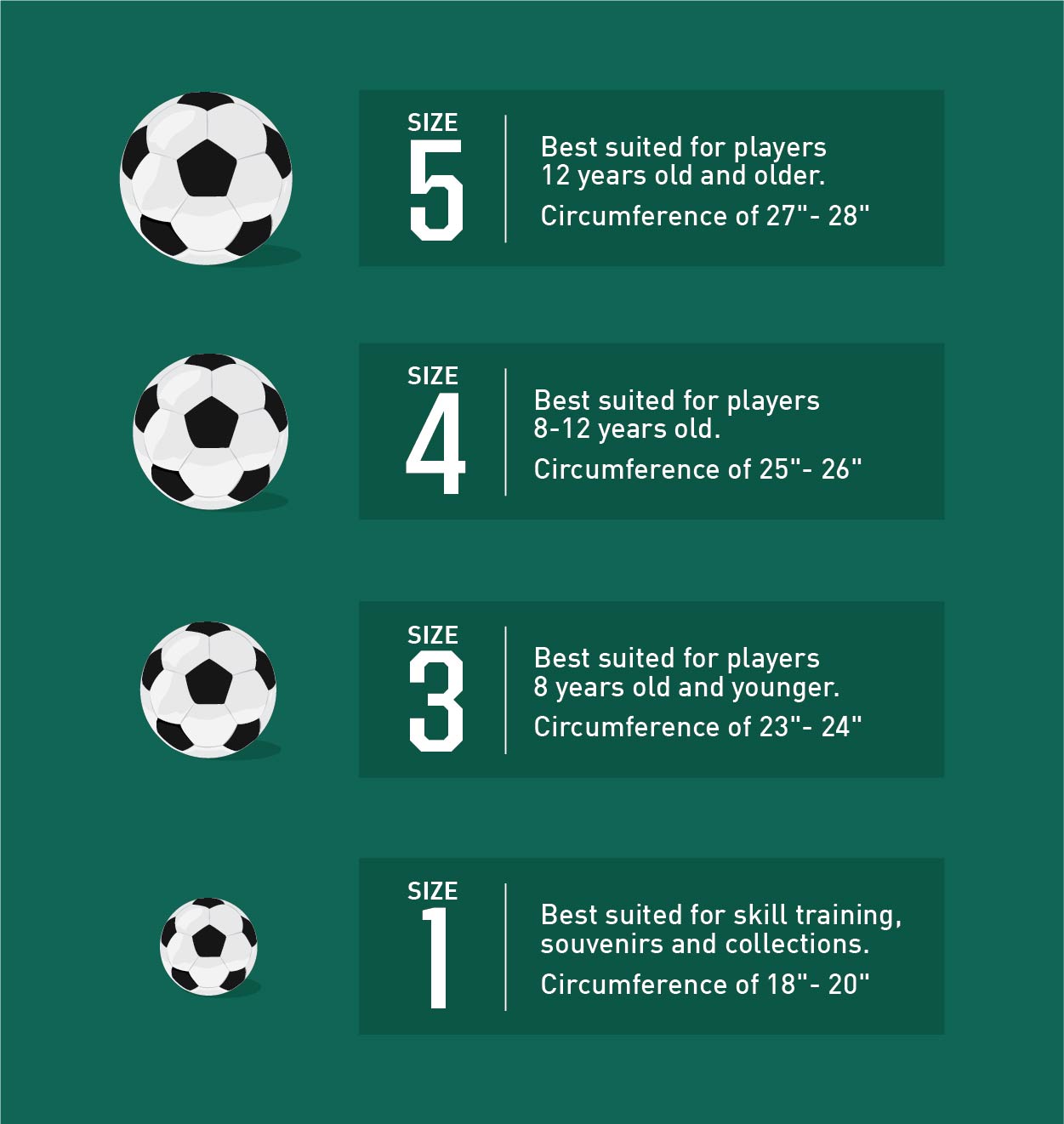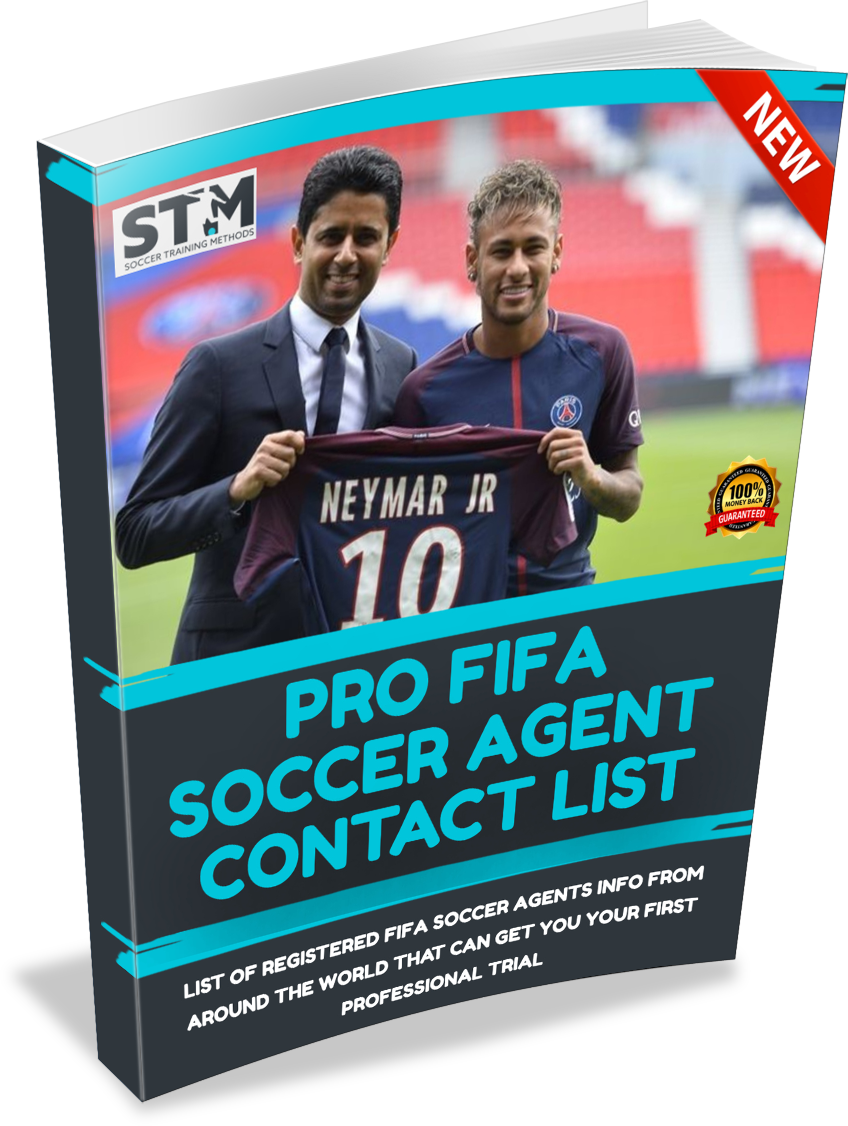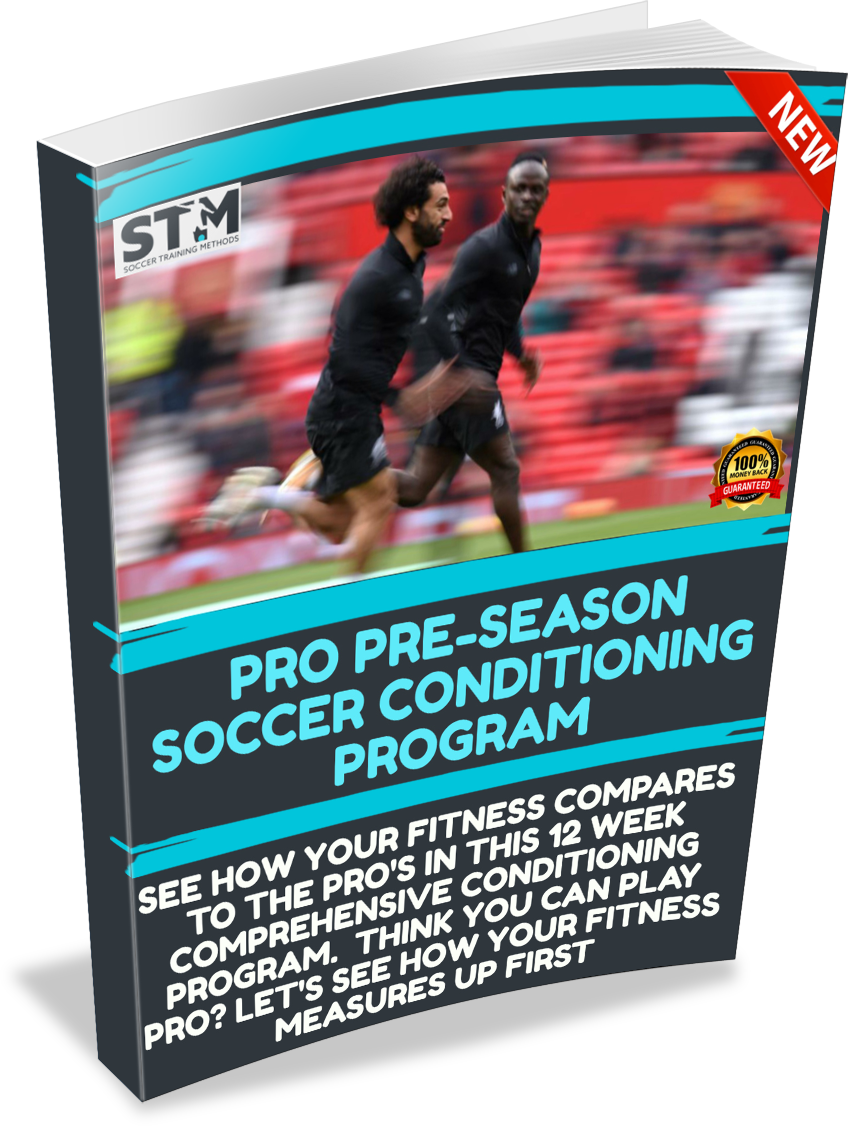Soccer Ball Size 5 - Does Size Really Matter?
A soccer ball size 5 to be exact is the gold standard of 11v11 games.
Now there are several levels of quality from a size 5 ball you can pick up at your local sports store and the one they are playing with in the Champions League Final.
Shape, material, stitch and so much more go into finding the right ball for your level, find out what's right for you below.
All Sizes Are Not Created Equal

Which Ball Do The Top Pro Leagues Use?
Here you will find the soccer ball size 5 that all the top leagues and competitions around the world use.
If you want to get one of yourself or you're just curious to compare them you will see the brand and the quality of each ball below.
Keep in mind that whether it's the champions league or the world cup the quality of ball will be quite high and similar, with every great ball though there are replicas you can get for a more affordable price.
One of these balls may be the price of 5 or 6 lower quality balls so you need to decide for now do you want to train with one high quality ball or five or six lower quality.
World Cup Ball (2018)

Champions League Ball (2020)

Premier League Ball (2020)

La Liga Ball (2020)

Serie A Ball (2020)

Bundesliga Ball (2020)

What Ball Size Do Pro's Play With?
No big surprise here but the pro's in every league and I mean every outdoor full field 11v11 league play with a soccer ball size 5. No matter the brand of the ball the size will not change, size 5 for all.
If you purchased a ball or played with a ball that feels a bit different make sure it wasn't a size 4 or a futsal ball you have been kicking around, got it? Good.
Top 3 Things To Look For In A Size 5 Ball
1. Quality stitching - spend a little more for a name brand.
2. Not warped.
3. Good bounce to it.
Top 3 Things To Remember When Buying A Ball
1. Brighter does not mean better.
2. You get what you pay for.
3. Stick to name brands (Nike, Adidas etc).
Is Sitting On A Ball Bad For It?

"Get off that ball you'll warp it!" said every coach ever. They aren't wrong exactly. Sitting on a ball excessively may change its shape slightly so don't make a habit of it.
Sitting on a ball constantly can alter it's overall form, feel and condition of the ball so if you're going to do it at least rotate which balls you sit on every training!
Oh and before you start thinking that sitting on ball during a game will work to your advantage in some strange way get that thought out of your head, a ref will blow the play against you in a second hot shot.
Sitting on any ball can't be good for it even a soccer ball size 5.
Can You Fix A Popped Ball?
To be straight with you, when you pop a ball, there is usually no turning back. Of course you can try pumping it back up but usually that won't do you much good.
Once the plastic balloon inside is popped your next step should be to start looking for a new ball to buy. Yes this usually happens by accident and nobody is trying to pop their ball but here are the most typical reasons a ball gets popped you should try (but sometimes can't) to avoid.
Top 5 Reasons Why A Ball Pops (Soccer Ball Size 5 Included):
1. Old and overused, just a matter of time I'm afraid.
2. Hits directly off the metal corner where the crossbar and post meet or the metal pegs that are attached to a goal to hold the mesh up (that's the worst).
3. Metal sticking out of a fence behind a goal you are rifling balls at.
4. Ball rolling under a car! (we've all been there).
5. Poor quality ball just pops due to being poorly made.
How Pumped Should A Soccer Ball Size 5 Be?
What it should be according to FIFA regulations and what people typically like can differ widely. Hard, soft or something in-between really depends on what you like, now let's look at what FIFA requires.
FIFA says 8.5 and 15.6 PSI (pounds per square inch) is the required ball pressure each soccer ball size 5 should have prior to kick off.
I want to pump, you UP! So how much should you pump the ball up you ask without the fancy air gage measuring tool? Well the general rule of thumb is definitely not all the way to the point that it's so hard you can hold up a bank with it. But not too soft either that it's got no shape to it.
Better pump it a bit harder than soft because over time (a kick around or two) the ball naturally loses air so it'll be just right in no time. Better that then too soft and having to pump it up while you're already out of the house.
What's The Difference Between A Ball You Train With & Play Games With?
Well in a perfect world you want to train with the same ball you play games with.
The problem with this at every level but the pro's is that game balls are up to five or six times the price of a training ball. So to answer your question simply, yes, there is a difference but is not a massive difference you will ever notice when the whistle goes.
Typically game balls are made with slightly better materials and are constructed to last longer, where training balls won't last as long but will do the job day in and day out. Not a game breaking difference to have a soccer ball size 5 (training or match) to improve your game.
Where Can I Buy A Good Size 5 Soccer Ball?
Some Personal Thoughts On What Makes A Good Soccer Ball Size 5?
I’ve played with balls (that didn’t come out right) from all over the world from North America to South America to Europe and Asia. Across the board in all the leagues I’ve played in, my game has never gone up or down because of the ball we used.
So what’s the lesson here? Stop worrying about the ball, ref, the guy with extra short shorts and loving every minute of it and start concentrating on raising your game by working on your fundamentals.
You wanna stick with name brands here, adidas, nike and puma come to mind first. Every top quality soccer ball size 5 have these common qualities:
- Made with all weather material (rain, snow or heat? no problem).
- Is not or does not warp easily.
- Cushioning between inner and outer lining.
- When pumped properly has a good bounce to it.
Soccer Ball Size 5 & Many More Description
Size 5
- This is your most common ball for soccer for players above 14 years of age world wide.
- Indoor, outdoor and world cup to pick up soccer, size five is the size used by all leagues and all players anywhere you can find a pitch.
Size 4
- One size smaller than the 5, the size 4 is the standard size used in a futsal matches but differs in density then a futsal ball.
- The size 4 is more commonly used for ages between 8 to 12 who are still learning the game and needing a ball to match their smaller frames.
- Once you get a bit older the transition is made to the standard size 5.
Size 3
- If you’re under eight years of age then the size 3 soccer ball is what you'll be using to develop those skills.
- A smaller ball is used for obvious reason due to the lack of strength you have at that age to move with and strike a ball.
- As a players ability, size and strength increases so does the size of the ball used to accommodate for that growth.
Size 2
- A size two or mini ball is used mainly for promotion events as a gift or souvenir.
- Also though can be used to improve your skills on the ball around the house (and it doesn’t break nearly as many lamps).
- Its small size makes it difficult to juggle with and keeping it under control which is perfect for those who need to improve their comfort with the ball.
Size 1
- These tiny balls are used for promotional purposes only.
- You’ll never find a ball of this size used on a match or training pitch anywhere.
- If you’re creating your own version of hallway soccer in your house then you might find this ball useful, nowhere else really.
Futsal Ball
- A futsal ball is the same as a size four regulation ball but much more bottom heavy.
- This ball was created for a sport which involved much more technical ability and a ball that doesn’t bounce helps a player maintain control of it.
- The ball used for futsal is also made from a material that allows more friction allowing a player to maintain the ball at a close distance a defenders nightmare.
Indoor Ball
- Generally indoor soccer is played with a regulation size five ball that you would play outdoor with.
- There are actually some indoor balls specially made for hardwood gym floors that allow for less damage to the other players when hit by it.
- It’s made of a similar material that you find a tennis ball made out of so if it were to hit you it would hurt much less than a regular soccer ball.
What Are The Different Sizes For Soccer Balls & Why So Many?
There are all different sizes of balls from regulation ones that the pros use to little tiny size ones.
A different weapon in the arsenal I suppose, but do you know which ones are used for what situation? Here's a brush up incase you forgot.
Famous & Most Talked About Soccer Ball Size 5 In History (World Cup, Euro & Champions League Balls)
World Cup 2010 Jabulani

- One of the most controversial balls used at a major tournament in recent memory has been the Jabulani ball from the 2010 World Cup.
- Players complained about the ball being too light and unpredictable while goalies said it swerved and knuckled making average shots much more difficult to handle.
- This was anything but a soccer ball size 5 that was suited for the world's biggest competition.
Champions League Finale

- Maybe the most recognizable ball these days is the champions league Finale ball which is used throughout the UEFA Champions League.
- This ball covered in stars is the first ball on everybody's Christmas list and is the Ferrari of soccer balls at the professional level.
Euro 2012 Tango 12

- Here she is, the next line of great balls is the Euro 2012 Tango.
- Its simple design reflects the classic look of the Tango over the years and will be the ball used to light up goals in Poland and Ukraine in the summer.
Do Some Balls Curve & Swerve Better Than Others?
Well obviously it comes down to technique, form and ability to hit a ball with some dip and swerve.
Interesting though that several players (mainly pros) say the balls are getting so technologically advanced that they don't resemble the typical movement a soccer ball should.
Trying asking keepers about the 2010 World Cup ball the Jabulani, they'll tell you at times the ball takes twists and turns in the air that even Schumacher doesn't understand.
Juggling A Soccer Ball Size 5
Okay so which soccer ball will make a terrific juggler? Well now, this is going to be awkward, none of them pal.
Although certain balls may be made with fancier more expensive material or created by the big name companies no matter which ball you end up using, none of them will make you a better juggler.
Juggling is a skill that involves repetition and familiarity on the ball not a certain pair of shoes or equipment, you've heard it before, a poor craftsman blames their tools.






